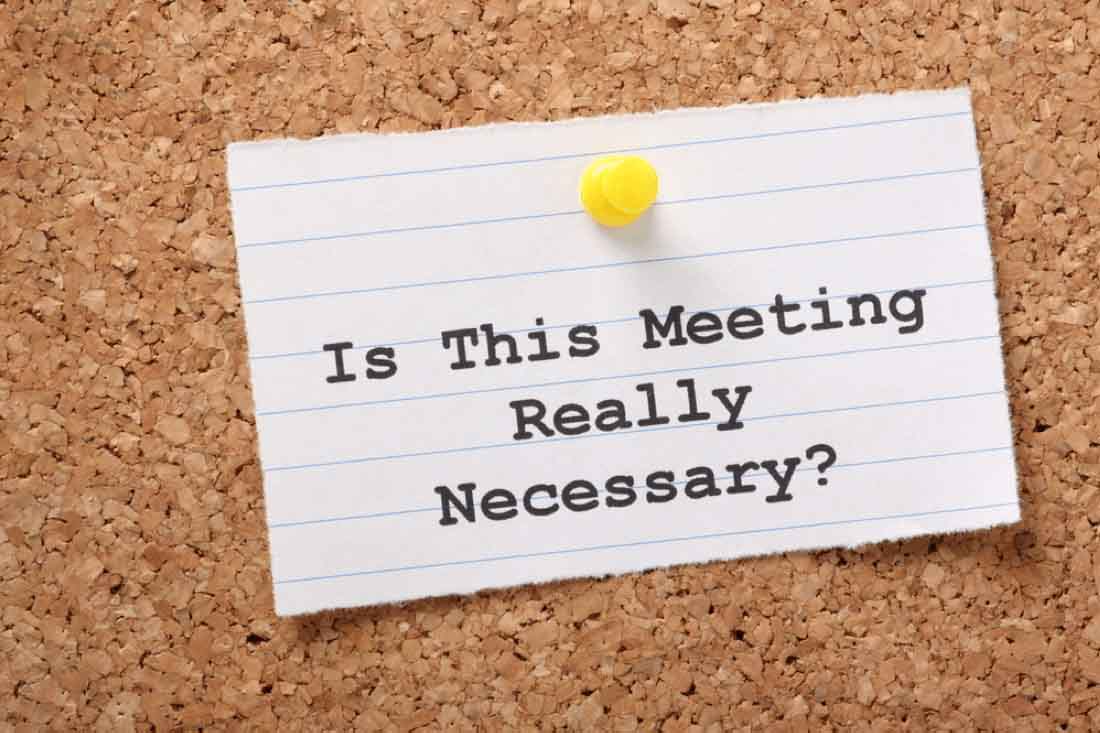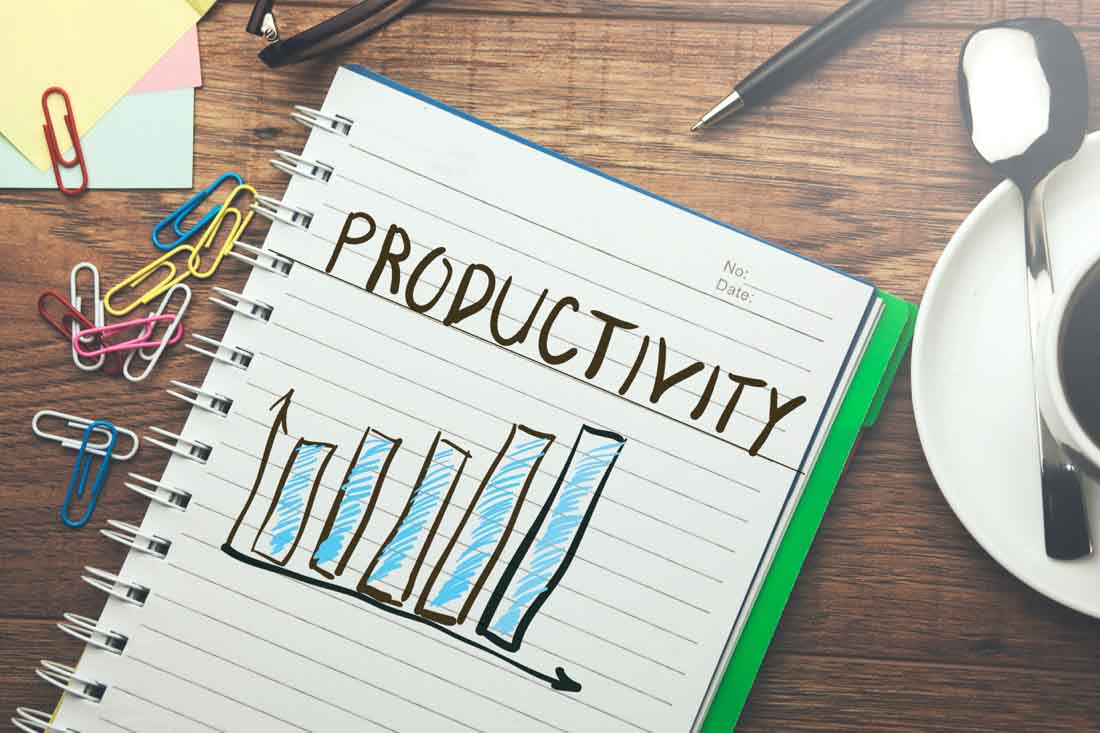Office distractions are hard to avoid, whether your employees come into an office or work remotely. But they undermine productivity and hinder goals. From digital interruptions to physical disturbances, the modern workplace is filled with obstacles pulling employees away from tasks and impeding focus.
As a manager, business owner or leader, it’s important to understand the impact of distractions on productivity and find ways to minimize them for your staff. In this post, we’ll talk about common workplace distractions and ways to minimize them.
The impact of workplace distractions on productivity
It’s no secret distractions significantly impact productivity. They negatively affect your ability to focus, increasing how long it takes to complete work and reducing your ability to perform your best.
Many employees suffer these consequences — but don’t know how to stop them. In a Crucial Learning poll from 2022, employees reported various issues stemming from distractions at work:
- 73.2% felt overwhelmed
- 71.7% worked more slowly
- 54.2% lost motivation
In Udemy’s 2018 Workplace Distraction Report, employees reported that distractions in the workplace:
- Keep them from performing as well as they should (54%)
- Make them significantly less productive (50%)
- Keep them from advancing in their careers (20%)
The science behind why distractions are so bad for workplace productivity is equally insightful.
- Studies show it takes an average of 23 minutes and 15 seconds to get back on track after each interruption.
- Distractions increase stress levels and decrease job satisfaction.
- Task switching due to distractions reduces productivity by up to 40%.
- Multitasking — typically a reaction to distractions — increases errors by 50%.
For all these reasons and more, figuring out how to minimize distractions should top every manager’s list of priorities. It’s the best way to increase productivity and help employees stay focused. But first, you must learn to recognize them.
Differences in office distractions vs. distractions for remote workers
Remote work opens the door to all kinds of productivity benefits — but it also introduces new distractions. While some workforces returned to the office after the COVID-19 pandemic, many maintain remote or hybrid models. This means leaders must consider how distractions impact productivity across different locations.
In a traditional office, distractions often come from spontaneous conversations with colleagues or ambient noise. At home, employees face a different set of distractions such as family interruptions, household issues and the lack of a dedicated workspace. This blurs boundaries between work and personal life, making it harder for employees to sustain focus during work hours or disconnect and recharge at the end of the day.
Leaders need to recognize distractions vary by environment and implement strategies to support focus across both in-office and remote settings.
The top 8 office distractions and how to minimize each
Whether your employees work in a traditional office or from home, it’s important to identify common distractions and use targeted approaches to minimize their effects for a more focused work environment. To help, let’s look at the top workplace distractions and strategies to manage them.
1. Interruptions from other people
Whether it’s the coworker who stops by your cubicle to ask a question or a child who needs help with homework, other people are a major distraction in the workplace. While it’s important to talk to colleagues to build rapport, and we can’t avoid responsibilities at home, these interruptions keep us from performing our best.
Management strategy: Being direct with chatty colleagues about their impact helps lessen their ability to distract. Encourage employees to close office doors, work in a designated quiet area or use headphones for focus time. This sends the signal they’re unavailable to chat and helps reduce interruptions from others when it’s time to concentrate.
For employees who work from home, help them find resources to reduce the likelihood of distractions from other household members — whether that means sharing childcare duties with another adult or by working from another location during certain times.
Better yet, use ActivTrak’s Productivity by Location to view productivity by location. This helps you understand if employees are more productive at home or in the office, and gives you the opportunity to help employees find the best place to work while backing up your policies with data.
2. Digital notifications
Constant pings from email, direct messaging and other apps pull us out of our flow states. If we feel we have to respond to every message, it’s difficult to concentrate on work. Most workers receive a constant stream of emails, and it’s often hard to decide which ones need a response now and what can wait until later.
Management strategies: One excellent way to help employees manage notifications is to encourage them to put on “do not disturb” mode during focused hours. Time blocking, or setting aside a set amount of time to work on a task, helps employees turn off other distractions and focus solely on the task at hand.
Another great strategy is time blocking 30 minutes for email responses and waiting until the end of the day to address them. For employees working from home, setting clear boundaries about work hours and interruptions helps friends and family know when to limit distractions.
Sometimes employees don’t realize how much time they’re spending on distracting websites or apps. Equipping them with data from activity monitoring tools, such as ActivTrak’s Personal Insights Dashboard, shows when they’re most able to focus during the day. This makes it easy to schedule other activities around those productive hours, and to understand which distractions to eliminate in favor of completing tasks more efficiently.
3. Personal phone usage
Did you know the average person checks their smartphone 47 times a day? That equates to six times an hour if you’re at work for eight hours. Whether it’s personal messages, social media or internet shopping, personal devices like cell phones and tablets are major distractions in the workplace.
Management strategies: Some workplaces have strict policies regarding personal device usage, especially if the work they do is sensitive, such as in finance, healthcare or defense. But most employees prefer to have access to their phones throughout the day.
To mitigate the level of distraction, encourage employees to use “do not disturb” modes during work hours or to put their phones away and on silent mode. Once again, teaching time blocking is a great way to help employees set times when they focus and times when they use personal devices.
4. Ambient noise
This is a big one for office workers. Workplace noise also causes distractions. If you work in an open-plan office, you may find typing and conversations from other employees distract you from your work. Research shows a majority of employees (85%) have trouble concentrating in their work environment. Yet less than half (41%) have a private space to work.
Management strategies: It would be great to give every employee their own office with the option to close doors to control noise levels. But most modern office layouts don’t allow for this, and even employees who work from home may not have a private space where they can cut down on ambient noise.
If possible, set up a quiet room where employees can go to concentrate. Conversely, set up noise rooms, such as phone booths, where employees have huddles or take phone calls without distracting others in the office space.
Another option is to enforce a quiet policy except in certain spaces like lunchrooms or break rooms. Other ways to mitigate the noise issue include encouraging employees to wear noise-canceling headphones or work from another location, such as a library.
5. Meetings
Meetings provide employees with a valuable opportunity to collaborate or communicate about tasks effectively. But unnecessary or unproductive meetings eat up time for more productive tasks. According to research by Atlassian, the average employee attends 62 meetings a month. Half are a waste of time — nine in 10 employees admit to daydreaming and nearly 4 in 10 say they tend to fall asleep. Two-thirds of employees do other work during boring meetings, especially if those meetings are video calls.
Management strategies: First, encourage your staff members to replace unnecessary meetings with more efficient communication channels. Then, make sure they only invite need-to-attend team members. Anyone who calls a meeting should provide an agenda and goals so attendees know what to expect and what they’ll get out of it.
Some workplaces block off certain times of day so employees can’t schedule meetings, such as Monday mornings or Thursday afternoons. This allows everyone in the workplace to focus on the work they need to perform without having to interrupt their concentration.
Need help determining how much time employees spend in meetings and when to schedule them? ActivTrak’s meeting insights give you data on when meetings are scheduled, how much time employees spend in meetings vs. working and how they spend their days working overall.
6. Competing priorities or deadlines
Giving employees too many assignments is another form of distraction, as it requires people to jump from task to task and break concentration. The issue creates stress if several people assign tasks as “top priority,” as employees may struggle to decide which project to finish first. In some cases, employees may feel pressure to do everything, which leads to overworking that’s detrimental to their health and productivity.
Management solution: Keep a close eye on each employee’s current workload and how they’re assigned tasks to ensure they aren’t frequently distracted or overburdened with new requests. Using workload management software like ActivTrak helps leadership gain insight into how much work individual employees take on. Additionally, discuss workloads in employee syncs to check how they’re doing and see if there’s a need to reduce workloads or shift deadlines.
7. Visual distractions
Clutter negatively impacts our ability to think and focus on the tasks at hand. If our desks pile up with paperwork, files or last week’s lunch, we start to feel stressed out — whether we recognize it or not. Often the clutter on our desks is deprioritized work we put off until later, like filing or expenses. But it’s easy to forget these items, leading to even more lost time. Poor lighting is also be a visual distraction, as your eyes have to compensate when conditions are too dim or too bright — leading to increased eye strain, headaches and fatigue.
Management strategies: Start a trend of weekly desk cleaning. Set aside half an hour on Friday afternoons to handle filing, submit expense reports or address workspace clutter so everyone comes back Monday morning to a clean slate. If everyone in the office is required to do it, no one feels isolated as the only staff member addressing it.
Make sure employees also have suitable lighting wherever they work. Organize the office layout to put employee desks by windows and use LED lights with a neutral color to promote focus and productivity. For remote employees who may have less flexibility in their home office location, provide stipends for lamps and fixtures to improve lighting conditions in any space.
8. Inefficient, outdated or slow technology
Technology should streamline work, but outdated or sluggish systems often cause frustrating distractions. According to research, poor IT setups in the workplace contribute to an average of 22 minutes of lost productivity per day — adding up to about one full workday each month. Long load times, system crashes or incompatible tools not only waste time but also disrupt focus and workflows. Even new technology serves as a distraction: Harvard Business Review found poorly done AI work (called “AI workslop”) adds nearly two hours of work to employees’ days, reducing their ability to focus.
Management strategies: Start by talking with employees to understand which tech issues disrupt their work the most. From there, focus on investing in modern, reliable systems and keeping all software and hardware up to date. Make sure IT support is easily accessible to resolve problems quickly and reduce downtime.
Additionally, verify the AI tools you introduce function as intended and employees are trained to use them properly to reduce AI workslop or rework. Finally, look for opportunities to streamline tools and processes, helping employees work more efficiently without the frustration of outdated or uncooperative technology.
Identify and minimize workplace distractions with ActivTrak
Ready to put these strategies to work at your organization? ActivTrak’s workforce analytics solution makes it easy to pinpoint distractions and stop them in their tracks. Get real-time activity reports to see when and where employees are most productive and what distractions hamper them, such as non-work-related websites or social media.
More than 9,500 companies use ActivTrak dashboards and reports to:
- Empower employees to build schedules around their most productive work hours based on actual data.
- Gain insight into which employees need help limiting distractions.
- Use Personal Insights reports to show employees how they divide time between focused work, collaborating and multitasking.
- Uncover how much time employees spend in meetings and which hours are best for focused work.
Get a free demo of ActivTrak to see how we help decrease the impact of workplace distractions in your organization today.





